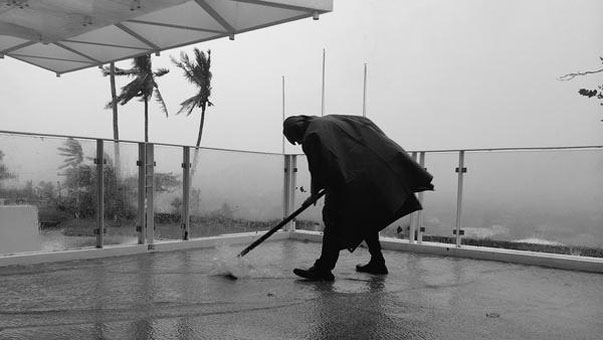In the Philippines, super typhoons are 'the new normal'
Locals say climate change is making tropical storms more intense, as mass evacuations ahead of Typhoon Hagupit put most Fiilipinos out of harm’s way.
Many here in the Philippines feared the very worst as Typhoon Hagupit roared off the Pacific but it now appears that communities lying in the storm’s path will avoid widespread destruction, severe flooding – and ultimately – high casualty numbers.
While details are scarce, information has started to trickle through from communities in the eastern part of the country, with officials reporting terrifying winds and damage to housing in some places.
However, there does not seem to have been a repeat of the deadly storm surge which followed Typhoon Haiyan last year – and for the people of the Philippines, that’s good news.
Here in the city of Legazpi, the wind is screeching through the air as the eye of the storm passes some 70 km from here. What’s more, rough seas are now threatening to flood neighbourhoods situated closest to the water – but the governor of this region seemed to be taking it all in his stride when I grabbed him for a chat.
“Hey,” shrugged Joey Salceda, “this is the new normal in this part of the world”. He’s not happy about it of course: the city was supposed to host a major inter-governmental conference starting tomorrow but the event that has now been moved to the capital Manila.

Nonetheless, it’s the sort of thing goes with the territory. “Thanks to climate change, typhoons are getting more intense so it’s something we just have to accept,” he said.
Governor Salceda has noticed a ‘major’ change in attitude, with a staggering 600,000 people taking up spots in some 3,000 official evacuation centres in this region. For this mass migration, the governor thanks something he calls “Yolanda Phobia”.
Typhoon Yolanda (or Haiyan as it was known internationally) took the lives of more than 7,000 last November and wiped out whole districts in its path – a traumatic event that deeply shocked the nation. It also seems to have motivated just about everyone here to take severe storms more seriously.
We have just come back from a crowded shelter in a water-side community called Sebang. It wasn’t a particularly nice place to be, with a thousand-odd people sharing two toilets and a tap, but it’s safe and dry and the walls are solid.
Some of the women there told us their husbands were still at home, guarding their possessions from the weather – and opportunistic humans. But they didn’t seem overly concerned. “We know what’s coming”, said Michelle Barja, who was camping out with her six children. “My husband knows it’s dangerous. He’ll come here if he has to.”
Follow John Sparks on Twitter: @c4sparks
